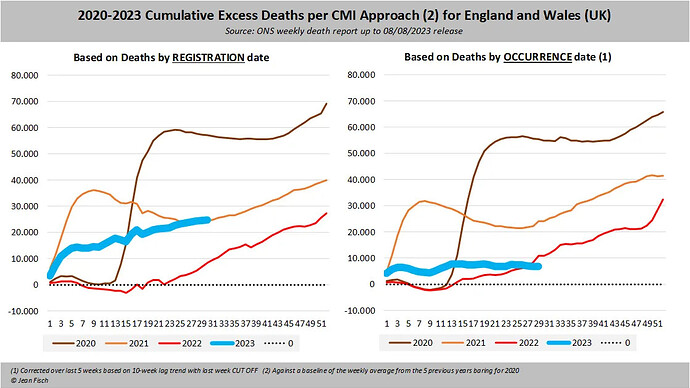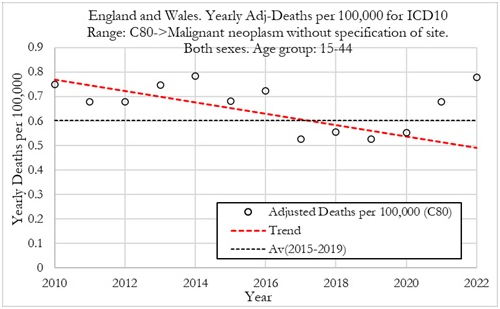Hi @admin , from PM’s substack above:
" Very simply, we still don’t know what caused the (absolutely, definitely) real excess death patterns we have seen since Q2 2021. We have theories, and given that we are talking about hundreds of deaths a day, we urgently need to determine which of these theories is the right one (or, more likely, the right ones ) - only then will we have a hope to fix them. Current attempts to be timely on death registrations are doing this at the cost of mis-stating when these deaths actually happened. And this means we are likely to look to the wrong causes and address the wrong factors, muddying the waters, and making it less likely we will be able to address the issues themselves."
the bold script is mine - which to me suggests we have a real problem with excess deaths but now we have data that mistimes the deaths thereby muddying the waters - if one were to adopt a conspiratorial approach (like I do ![]() ) then if date shifting makes it difficult to show that the jab coincides by time with excess death rates the PTB continue to laugh all the way to the bank.
) then if date shifting makes it difficult to show that the jab coincides by time with excess death rates the PTB continue to laugh all the way to the bank.
I also note that the ONS continues to retain data or in some cases stops looking for it ( e.g.vaccinated versus unvaccinated by age) :
“The much more difficult issue comes when delays between occurrence date and registration date are not constant, but vary dramatically. There are a variety of ways of showing that this could be happening, but the most direct is to look at ONS’ monthly summaries of deaths by occurrence date (unfortunately, they do not release these weekly)”
I don’t entirely get this issue - if the timing of deaths are being pushed forward making current numbers too high, doesn’t this mean that earlier numbers were too low, it’s the ruck in the carpet argument - no matter where the ruck is its still there just in a different position, i.e. excess deaths are still there - which PM seems to be saying in the quote above.
cheers


